Max the Brave
by Ed Vere
Youngsters will fall in love with Max, the wide-eyed, jet-black kitten with an insatiable curiosity, and the mouse who outsmarts him.
Ed Vere (Banana!) introduces the enchanting hero on the title page as he's waking from a nap. Blue-gray pen strokes indicate his closed eyes and a button nose, with only a slight twitch of a tail to suggest movement. With a turn of the page, Max is awake, the round white orbs of his eyes resembling fried eggs with large, black pupils in place of yolks. "This is Max," says the text on a sunny yellow background. "Doesn't Max look sweet!" Opposite, the red backdrop telegraphs a change in mood: "Max looks so sweet that sometimes people dress him up with bows." But the feline's furrowed brow, yellow eyes and too-tight pink bow foreshadow trouble.
The author-artist uses all the tools at his command. A page turn reveals a vignette in the upper left corner of Max stomping on the now-rumpled pink bow, a black cloud above his head, the universal comics signal of an emotional tempest: "Max does not like being dressed up with bows." Vere uses the text that appears in the lower right corner of that same left-hand page as a caption for a full-page portrait of made-over Max, opposite, standing in a power pose, sporting a red cape: "Because Max is a fearless kitten./ Max is a brave kitten./ Max is a kitten who chases mice." Both "fearless" and "brave" appear in a larger font, and "mice" is in bold. The supercat alter ego's shadow balances the tempest cloud of the upper left-hand corner, almost as if Max has transformed his anger into action.
By the next spread, Max is depicted normal size and on the hunt to "find out what a mouse looks like... and then he will chase it."
The matter-of-fact text sets up a playful tension with the pictures. Vere sets up a classic comics-style sequence but omits the construct of a panel. Instead, he uses the page itself like a series of four horizontal planes. Max spies a metal can, looks inside ("Mouse? Are you in there?"), climbs on top, then crawls inside, all against a yolk-yellow backdrop. In the lower right corner, a fly appears, triggering the pattern that extends over several pages: "Are you Mouse?" asks Max. "No, I'm Fly," says Fly. "But I just saw Mouse scurry by a moment ago."
Vere sets apart each encounter with a different background color, and varies them through skillful pacing. For a scene with a goldfish, he cuts the page in half. In the top half, Max sits on a yellow table beside a goldfish. On the page's lower half, a thick yellow line indicating the table top juts out from the gutter as Max tips the bowl toward him, "Excuse me, please, but are you Mouse?" Vere connects the two vignettes while also conveying the passage of time. He expands this idea on the next spread with a salmon-colored backdrop: on the left, a flock of birds rests high in a tree ("Excuse me, please, but are you Mouse?"). On the right, Max is high up in the branches, and the birds are on the ground; one casts an eye toward readers as its wings indicate the direction of Max's desired object ("We are not Mouse, we are birds," they say, "But we did just see Mouse scoot by").
Readers will savor the moment when Max finds what he's looking for ("Are you Mouse by any chance?"), only to be told, "Who, me? No, certainly not, I'm Monster!" Following the pattern Vere has established, Mouse points the way to a sleeping artichoke-green monstrosity (who uses his ear to balance): "Hmmm, I didn't know Mouse was so BIG," says Max. The comedy escalates as Max bounces up and down on the green fellow: "Wakey, wakey, Mouse!" On the next spread, readers observe what Max does not: "Mouse" is indeed awake, his gigantic eyes trained on the pesky kitten, as Max stares into the recesses of Monster's bottomless mouth ("Hmmm, I didn't know Mouse had such BIG teeth"). A completely black spread greets readers at the page turn; the only spots of color are the hand-lettered word "GULP!" and Max's yellow eyes with a tiny blue thought balloon--"gulp." Monster's sneeze saves Max ("Attchooo!!").
Max, "fearless" and "brave," gets right up and starts all over again, with a turn of events that will satisfy readers and leave them laughing. The furry fellow's guileless personality and singleminded pursuit of his goal make him the perfect stand-in for toddlers, and older children will appreciate Vere's playful wit and wish for Max's return. --Jennifer M. Brown



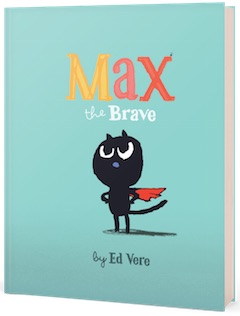
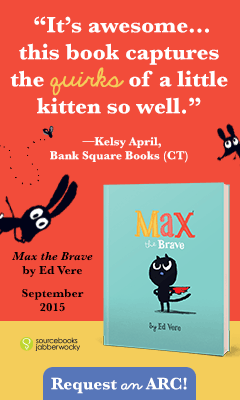
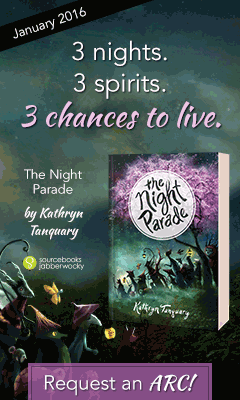
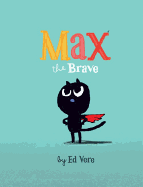

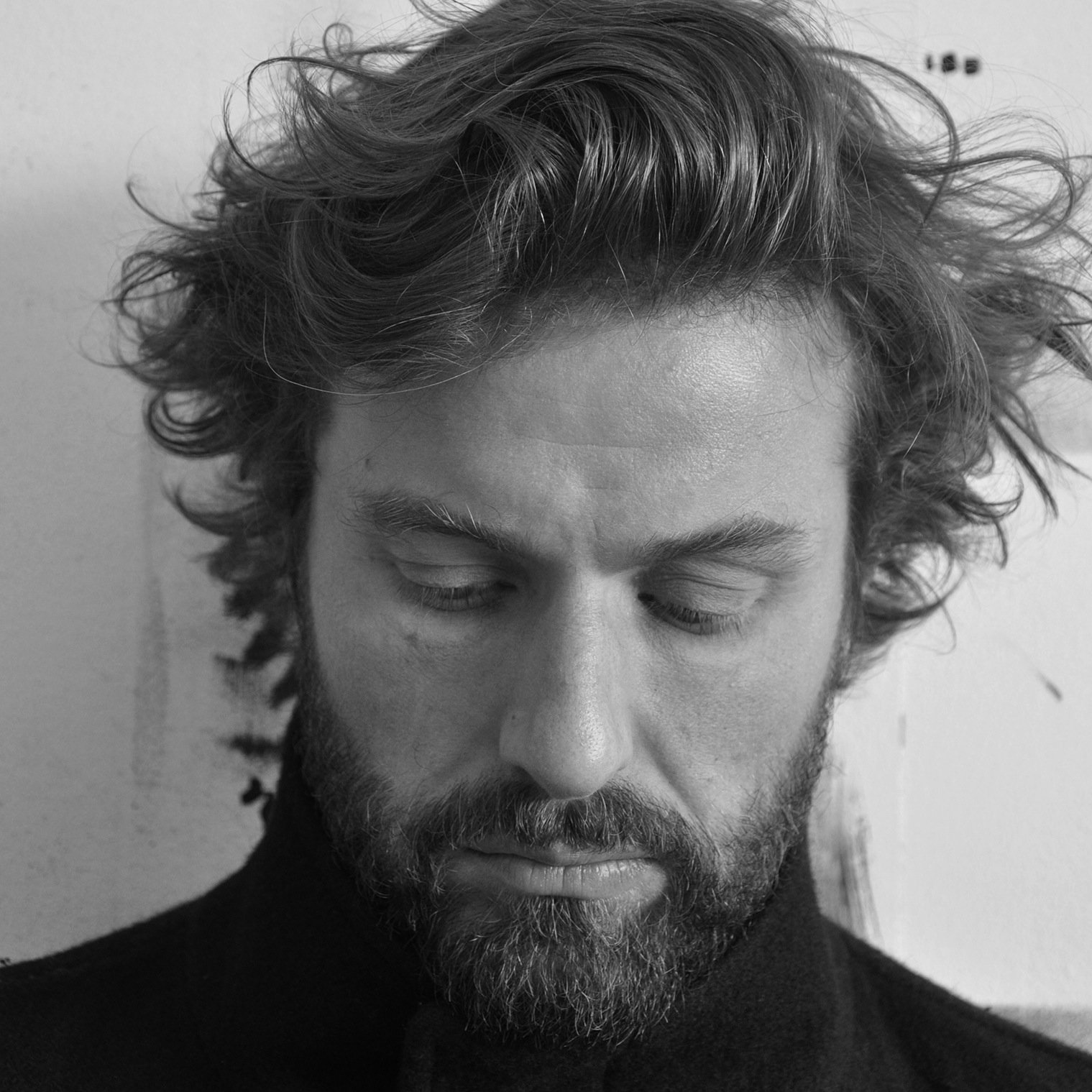 Max the Brave is the sixth picture book that
Max the Brave is the sixth picture book that 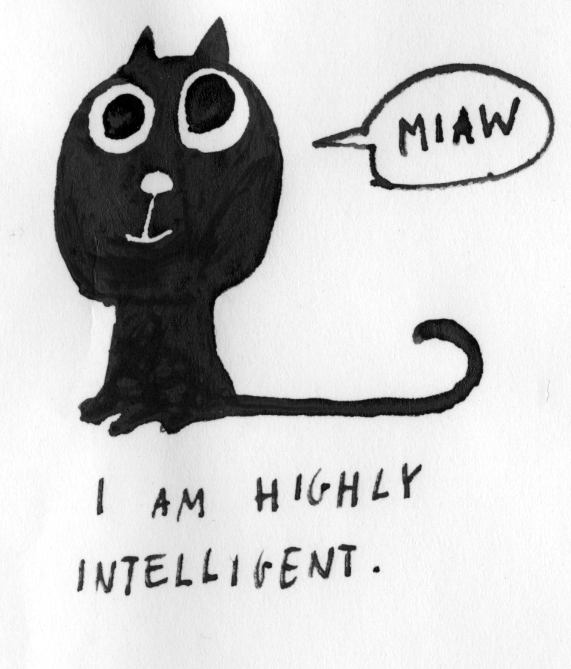 Here's an early sketch of Max.
Here's an early sketch of Max.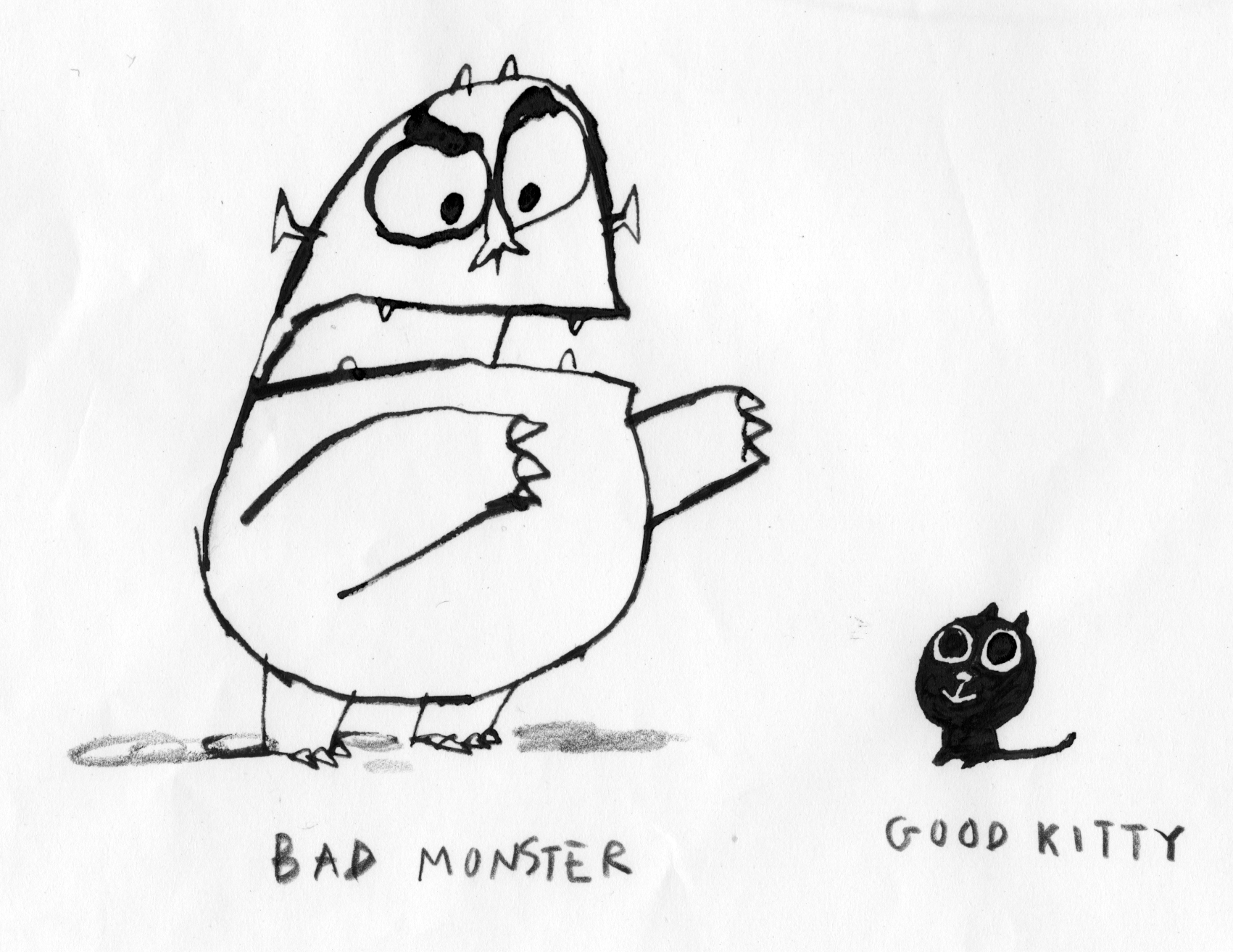 Your visual build-up to the Mouse (aka Monster) is so wonderfully dramatic. How did you pace your illustrations to create that impact at the page turn?
Your visual build-up to the Mouse (aka Monster) is so wonderfully dramatic. How did you pace your illustrations to create that impact at the page turn?  It's one of the things I love about drawing that's hard to explain--you're acting with the pen, and every gesture when drawing the eyes suggests something entirely different. Quentin Blake is a genius in that respect. Quite often he limits himself to just using dots for the eyes, but the placement of the dot and the expression they're able to convey is incredible.
It's one of the things I love about drawing that's hard to explain--you're acting with the pen, and every gesture when drawing the eyes suggests something entirely different. Quentin Blake is a genius in that respect. Quite often he limits himself to just using dots for the eyes, but the placement of the dot and the expression they're able to convey is incredible.